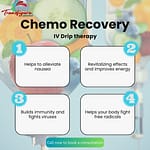
Dermal Fillers
Dermal Fillers are sterile gel like product used to create support for skin and structure in contours.
Why Fillers?
As we age, we begin to lose collagen and elasticity in the skin. This means, it isn’t easy for our skin to snap back into place after years and years of facial expressions, sun damage, natural aging and hormonal changes etc.
Fillers are used to plump up the skin in various places adding volume where collagen and natural volume has been lost over time. This eliminates wrinkles in certain areas of the face. In other parts of the face (such as along the cheek bones), it is also used to shape and contour the face into a more desirable manner. Fillers are also commonly used in the face areas, neck, and hands, as the parts of the body tend to give away our age quite quickly.
What are Dermal Fillers?
Fillers are generally used to bring a youthful look to the face. They enhance volume, augment lips, induce collagen production, eliminate wrinkles and help to restore a youthful and contoured appearance to the face.
What parts of the face are Dermal Fillers used on?
Typically, Dermal Fillers are used in the following areas:
- Cheeks
- Lips
- The Nasolabial (the lines that trail from the end of the nose to the beginning of the lips)
- The under-eye area
- Marionette lines (the lines from the corners of the lips)
- Jaw lines
What are Dermal Fillers made of?
Hyaluronic Acid Dermal Fillers are made by human genes being placed into a bacterium for reproduction. This Protein is naturally found in the human body, but it’s natural production decreases over time.
When should someone start using Dermal Fillers?
Typically, as soon as wrinkles are seen, they should be treated. If the wrinkles are still young or new they can most easily be prevented from permanently forming. If the skin is treated sooner rather than later, the deep scar-like wrinkles can be avoided. Fillers also help the skin to naturally produce more collagen, which also aids in maintaining a youthful appearance over time.
Longevity and duration of treatment
Duration of results: 8-10 months
Recovery from treatment: 2-3 days
Risks and complications: Low to medium
Anaesthetic: Ice/numbing/none
Procedure Duration: 10 to 30 minutes
Opening Hours
| Monday – Friday | 8.00 – 18.00 |
| Saturday | 9.00 – 17.00 |
| Sunday | 9.00 – 15.00 |
| Holidays | Closed |





